"When I said architects should get involved in humanitarian issues, people laughed at me"
Exclusive interview: Architecture for Humanity co-founder Cameron Sinclair describes the work he is conducting in Syria with his latest venture, and tells Dezeen that he'll "die happy" knowing that he will never win the Pritzker Prize (+ transcript).
Sinclair, 41, is a self-branded pioneer of a "new wave of humanitarian design" and has dedicated his career to providing design and construction services to communities around the world affected by natural and man-made disasters.
"Years ago, when I said architects should get involved in humanitarian issues, people laughed at me," he told Dezeen during the What Design Can Do conference in Amsterdam. "It was a very different climate."
He set up non-profit organisation Architecture for Humanity (AfH) with Kate Stohr in 1999, but in 2013 the pair left the company – which has since closed its head office and filed for bankruptcy – to follow separate projects.
"It gets to the point where, as you grow in scale, the quality of your work begins to waver and it's really hard to stay on top of it," Sinclair said. "It became less fun and for me creatively it was not fulfilling at all."
His new venture, named Small Works, is similarly focused on community development, conservation and post-disaster reconstruction. Current projects include housing refugees from Syria, building schools and hospitals in remote locations, and talking to Ikea about the production of its flat-pack temporary shelters.
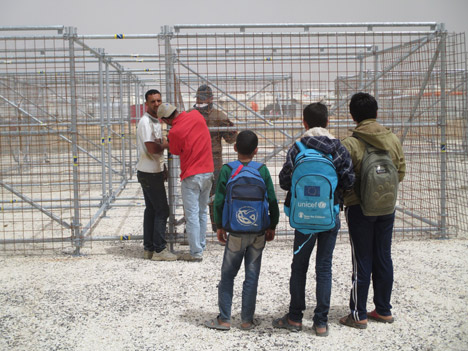
"Design isn't only about aesthetics, it's about problem solving and we have a planet plagued with problems," he said. "The human race is an endangered species, and unless we treat it like one and we use our skills for it, then we're fucked."
By taking an equity share in his projects, Sinclair is also trying to demonstrate to young architects that humanitarian architecture is a viable career path – although he admits that there aren't enough educational platforms for this branch of the discipline.
Related stories: see more about Architecture for Humanity
"There's no good training ground," he said. "The fact that only 40 kids get to hang out at Benetton's research lab to do this kind of work shows you that there's a problem, when we're training so many designers to work for profit."
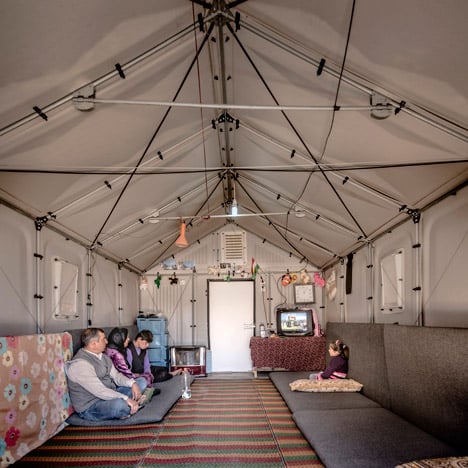
"I will never do a skyscraper in my life ever, I'm going to die happy knowing that," said Sinclair. "And I am never going to win the Pritzker Prize, I'm going to die happy knowing that."
Sinclair was one of the speakers at the What Design Can Do 2015 conference, which took place in Amsterdam on 21 and 22 May. Other speakers included maverick graphic designer Stephan Sagmeister, who Dezeen also interviewed during the event.
Read an edited transcript from our interview with Cameron Sinclair:
Dan Howarth: Can you explain a bit about yourself and your background?
Cameron Sinclair: I'm the co-founder of Architecture for Humanity and I ran that for close to 14 years. I left at the of end of 2013 and I've been working on projects in post-conflict, post-disaster areas around the world and a few other projects.
I'm currently working for a family foundation and also running Small Works, which is a for-purpose design firm focused on humanitarian issues around the world.
Dan Howarth: Why did you decide to leave Architecture for Humanity?
Cameron Sinclair: That was a decision that was made after about 12 years. For the first five years of AfH I wasn't paid, I was working my ass off and I never thought it would be a big organisation. We hit about our 12th year, and I realised we had revenues of about $10 million and we had about 80 employees around the world. I was trained to be an architect, but I was never expected to be an architect – I was just managing people.
It gets to the point where, as you grow in scale, the quality of your work begins to waver and it's really hard to stay on top of it. I think in the humanitarian space it's extremely hard to criticise someone on quality of work, especially when they're doing long hours getting paid very little.
It became less fun and for me creatively it was not fulfilling at all. But the work was amazing, and what I had felt, and what the other co-founder Kate Stohr had felt, is that our chapters had actually become the strongest element of the organisation.
We announced our departure in 2012, and then really it was about managing that transition. It didn't go as smoothly as it should have but I think we left at the right moment.
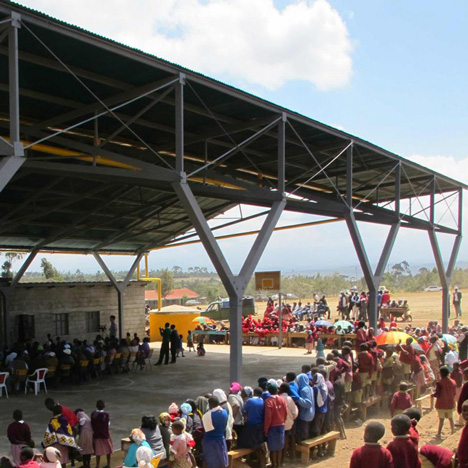
Dan Howarth: What's happened to the company since you left?
Cameron Sinclair: Unfortunately I think the board went in a direction that I didn't agree with and they subsequently folded the headquarters in early this year. All the chapters are still running, but the main heart of the organisation is now closed down.
Dan Howarth: But the work continues?
Cameron Sinclair: Yeah, and actually there's tons of projects happening that I don't even know about. In my firm I've actually hired a bunch of former AfH truces to work on projects.
I'm working on the Syrian border right now. I'm building a TB hospital in Ethiopia with some former AfH guys so the work's still going and some of it is under a different name.
Dan Howarth: How is the new venture that you've set up different?
Cameron Sinclair: You have to imagine years ago, when I said architects should get involved in humanitarian issues, people laughed at me. It was a very different climate. And now we've got lots of design entities. Of course there was strong social engagement movement in the 1960s and 1970s, but we were like the next waves, kind of the first pioneers of this new wave of humanitarian design.
The only question we were asking was: "Could architects get involved in these issues?" And the answer is yes, obviously, and it was very successful. That organisation helped over 2 million people.
The thing that plagued my mind for years is "can architects have a career doing this?" And as I began to spend a lot more time with the humanitarian industry, people were making six-figure salaries consulting, there's a billion-dollar business that is happening right under our noses, and we're so busy looking at: "Well I have to try and build this school for $30,000 so therefore I can only get paid maybe $8,000 maximum, how am I gonna live?" We're so busy dealing with the minutia of the small project that we're missing the big picture here.
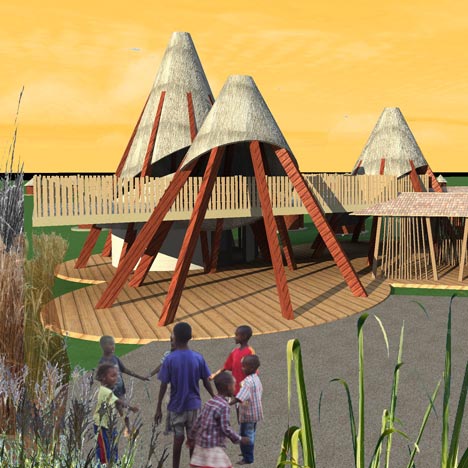
Dan Howarth: So what opportunities can architects take from this?
Cameron Sinclair: There's actually an opportunity for architects to do what I would call value added design. We spend our lives doing value engineering, which is kind of like making things cheaper. But when you look at what architects and designers can bring to social issues, it's not only much more engaging – it's also cost effective and we're figuring out that value. So I said: "Could you actually develop a for-profit that provides design services to communities in need?" and I think you can.
So we've taken on a bunch of projects. We're breaking even, which is good, and we're going to try and take on a few more rather than focusing on the single issue like "can we build a school?" or "can we build a hospital in Thailand?" It's how we can rethink the healthcare system in a country; how can we rethink the refugee camps, looking at the holistic ecosystem and redesigning that.
And then you're dealing at a scale but tackling it. The reason it's called Small Works is that I have a belief that highly adaptable solutions are what is the answer to these big monumental issues.
Dan Howarth: But then where does the profit come from? From government organisations?
Cameron Sinclair: No, you get hired by various different people – a non-profit could hire you. I know what the inside of a non-profit looks like, non-profits hire PR firms, they hire consultants, they hire data visualisation companies.
When it comes to implementing the damned project they want someone to do it for free, are you kidding me? You just paid a PR company $200,000 to promote a project that cost you $200,000 – I think you can pay that person.
The thing is, we don't value ourselves. We actually have to question ourselves and what is our value. This economy, with the ups and downs of the last decade – when the economy was booming everyone was happy but as soon the economy crashed in 2008, architects were making nothing and they were being laid off left, right and centre.
There is no social net for our industry. It's like "make it while you can!" We're like rats in a barrel, it's like we're going to end up eating each other to survive. And so I think it's reimagining what the finance system is. What I've been looking at is not "pay me for doing a project", it's taking an equity stake in projects and actually acting more as a developer, figuring out that if we can figure out a mechanism that improves the livelihoods of a community, maybe there's either retained equity.
Part of what I'm doing is looking at what financial models will allow people to do this. Because I know some of the most committed, dedicated, smartest people who don't want to work for a firm, they can't work for a firm. They've been snaked there, they've had a taste of humanitarian work and they would rather starve than work in an office. So how do we make sure they don't starve so that they can be super creative?
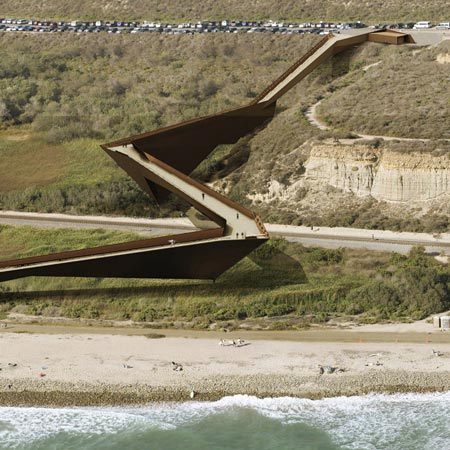
Dan Howarth: What is it that you're doing in Syria?
Cameron Sinclair: Another sticking point for me with working at AfH was we began to not do projects. For me the greatest humanitarian disaster happening in the past few years is Syria.
You have an assault within the country from an aggressive regime coupled with a terrorist organisation that was growing out of the discomfort of various conflicts in the region – so the birth and the rise of the Islamic State.
And you had millions of people fleeing, hundreds of thousands of people dying, and no one gave a shit because unfortunately, having gone through Iraq and Afghanistan, people were tired of getting involved in that region. They pretended it didn't exist, everyone put their fingers in their ears and was like "la la la, we can't hear you", and no one did anything.
What was happening in Jordan and Turkey and Lebanon was they were just being overwhelmed with these refugees. When I approached [AfH] and said "this should be one of the most important projects we get involved in", I was told we shouldn't be doing this. And I was like: "This is exactly what we should be doing."
Dan Howarth: How did you eventually get involved?
Cameron Sinclair: I started off a project in mid 2013, looking at coming up with a construction methodology that would engage the refugees themselves not only to build their own communities but to be able to redeploy those communities back into Syria once the conflict is over.
If we're going to spend billions of dollars building a refugee camp, and then billions of dollars on doing reconstruction work, it's not cost effective. We silo our humanitarian aid so that nobody actually looks at the budget of what it takes for someone to leave their country and then return.
We began looking at this idea, and I happened to win an award from a construction company that was doing scaffolding. And we sat there and we reengineered the idea of using scaffolding as a framework for using national and local building materials to create houses, schools and clinics. I'm the only western designer who is part of that company right now. Most of my team are from Asia, they're Persian designers, they're Arabic designers, they're African designers.
We worked within the peninsula to understand the indigenous urban planning strategy and then we developed our urban planning off that, as opposed to a refugee system. Then I got a little cheeky, was invited to do a pavilion for the 52 million displaced people in the world at the Expo in Milan. We took a budget to build the pavilion and we separated it one quarter for Milan and three quarters for Syria, and then we used that money to build a school in the Zaatari refugee camp.
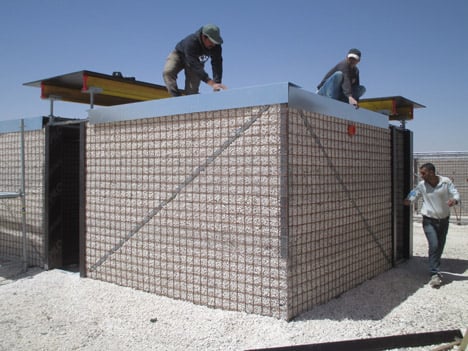
Dan Howarth: What do you think about Ikea's refugee shelters that went into production earlier this year?
Cameron Sinclair: It's great that they've entered the market. Before the idea of redesigning the refugee camp was for student projects. I think it's great that they're doing it. I am taking a personal interest in the revising of their current design solution because I work in the camps and I know how those have performed, and I think I'm going to work with Ikea directly to ensure that they get to the place they need to get to.
Dan Howarth: Do you think that Ikea's temporary solution could evolve into a real infrastructure?
Cameron Sinclair: It makes it hard to critique because I'm doing something similar. They're looking at a systematic approach to a technical solution for a vast problem and I'm looking at a human-centred solution to a vast problem, which is "do we need refugee camps?" as opposed to "can we make them better and who are we making them better for?".
Part of my new venture is to question the question. When someone says to me "can you help me design a refugee camp?" the question back is "do you need a refugee camp?" Given the fact that in the case of Syria, there are more refugees living outside the refugee camps than in them right now.
The people who are hiding in the urban infrastructure of Jordan and Lebanon outweigh the guys in the camps. This is what's happening to our urban infrastructure as a result of refugees.
Dan Howarth: Have you come up with any ideas yet as to how you might solve these problems?
Cameron Sinclair: It gets really complicated, because you're beginning to look at whether you can do temporary structures within an urban setting and then you get the fear of favelas that then form settlements, and what does that mean?
I think it's something that we're going to spend some time looking at. My first challenge I think was, there are 50 per cent of all kids that are out of school because of conflict, so my first focus was on education, then I'll take on some of the other big weighty issues. My firm is just four of us, we're this kind of tactical response team.
We're in Nepal right now, we're in Syria, we're talking about what do about Burma, and we're responding to those in very critical ways that engage the community and the local design community.
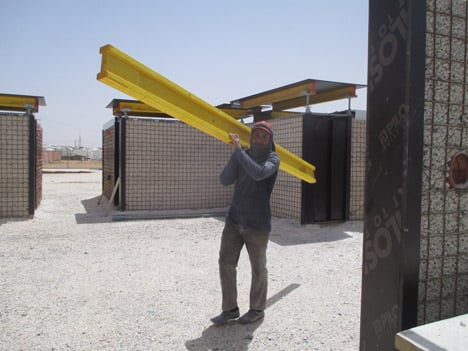
Dan Howarth: Should more people be using design to create impact around global issues?
Cameron Sinclair: I love Fabrica, they are a huge influence on me. And I remember in the 1980s how powerful Colors magazine was, and Adbusters, and all these things. Graphic designers have got their shit together, they know how to do something hard hitting.
When it comes to design, we sometimes don't know how to use our talents in a way. I mean that in terms of industrial design, product design, architecture, which to me is all the same thing – which is going to upset every one of your readers. But I think we haven't really yet fully understood how to use it in a way that will make a tangible impact.
When you're looking at the Orange Revolution and the Saffron Revolution, it's design that brought everyone together. And when you talk to any one of these revolutionary leaders, they talk about design. When you're talking to designers, they're like "no, we don't do anything".
There's a spectrum for people that do skyscrapers. I will never do a skyscraper in my life ever. I'm going to die happy knowing that. And I am never going to win the Pritzker Prize, I'm going to die happy knowing that. And so I'm not expecting that, the same way that I'm not expecting the sort of people that would do the skyscrapers and the Pritzker Prize to do kind of design activism or humanitarian work.
We've been lucky, we've had people like Shigeru Ban who's been able to bridge the gap. But I think quite often the design critique – it's really hard. There's not really enough of a spectrum in design journalism. How do you compare what mass design is doing with what Richard Rogers is doing? You can't, it's a completely different way of thinking. And so the schools I'm building are $25,000, you can't compare them with a £20 million school in London.
There's no good training ground. The fact that only 40 kids get to hang out at Benetton's research lab to do this kind of work shows you that there's a problem, when we're training so many designers to work for profit.
Dan Howarth: So we need more educational institutions that focus on humanitarian architecture?
Cameron Sinclair: How do you do that? Who are the people you turn to to say: "Maybe we can get so and so from Tulane, and we can get so and so from the Bartlett." There are very few people that will be kind in this field so you almost need to train the trainers. And then you create the army, we just don't have enough generals.
I think an important question to answer is: "Can designers have a life doing projects that revolve around social justice?" and if they can't, then we need to re-evaluate the role of design in society.
Maybe we should just admit that design is only for the one per cent. Just say: "Okay, once you're rich enough, you can have good design." Maybe that's what we should do, but a few of us out there are going to still hold the torch up and just say okay, design isn't only about aesthetics, it's about problem solving and we have a planet plagued with problems. The human race is an endangered species, and unless we treat it like one and we use our skills for it, then we're fucked.